About the Image
Oxo tower.
The story of the Oxo tower has become legend. Originally constructed as a power station to supply electricity to the Royal Mail post office, the building was constructed towards the end of the 19th century. Then acquired by the Liebig Extract of Meat Company (Lemco) in the 1920s, for conversion into a cold store.
Between 1928 and 1929, it was largely rebuilt to an Art Deco design by company architect Albert Moore. Much of the original power station was demolished, but the river-facing façade was retained and extended. Lemco wanted to include a tower featuring illuminated signs advertising the name of their product. At the time, London’s planning regulations prohibited skyline advertising displays along he Southbank.
When permission for the advertisements was refused, the company found a work around. The tower was built with four sets of three vertically-aligned windows, two round and a square with a cross pattern in the centre. That it can be read as Oxo, the leading product in the company’s range, was pure coincidence. It was an artistic, architectural decision, obviously. I may have exaggerated, and embellished the story, but that’s the gist.
How fortunate that the product had a short, sweet name that could be “accidentally” created so easily.
What is Oxo?
I can hear the question, what is Oxo? Well, Brits are very familiar with it, and my research failed to find how expansive its global reach is, but it has a global presence. The Oxo cube is a compressed cube of dried, beef extract and possibly a range of other ingredients. The two centimetre square, foil-covered cubes became a staple ingredient in British cuisine. Stock cubes you crumble into a meal to give it flavour. They were ubiquitous in kitchens the length and breadth of the country and are still available. Kept in small cardboard boxes, that will be pushed to the back of the cupboard, be knocked over, only to lose a cube or two. In the original foil wrappers, if not spotted immediately, they might be left and forgotten. Only to be rediscovered, behind a sauce bottle, some months later. At which time, it had absorbed steam from the kitchen and started to stick. Yum!
Now I have left you with that impression, I should say that they’re now hermetically sealed, so it’s no longer an issue. Which, for good or bad, has deprived future generations of that particular experience. Ahh, student days!
I confess that I’ve used hundreds of them over my adult life. Less so in recent years, as more options are available* but Oxo cubes wrapped in foil retain their nostalgic charm. There’s a joy in unfolding the wrapper which is lost when trying to open a stubborn little foiled bag.
*(and my husband has taken over the cooking since lock down.)
Other than the tower, which is beautifully lit at night, there’s a sense of familiarity about the rest of the building, or at least what we see here. It could be any UK factory of this of the period.
- Stone parapet around the roof. – Check
- Gutters and drain pipes. – Check
- Windows divided into smaller panes. – Check
- Reddish bricks, undoubtedly made by the London brick company, all weathered, stained and cleaned off, cleaned of the grime and such of yesteryear. – Check
All this makes that little, square, yellow, stone tower stand out all the more, an advertising beacon that’s recognisable as a landmark and a trademark.
Creation: Masking fluid is painted onto watercolour paper to create an image. This is covered with a watercolour wash and covered with clingfilm. The picture is further developed using acrylic inks once the film is removed. The masking is removed after several layers are added and allowed to dry. Revealing the final picture.

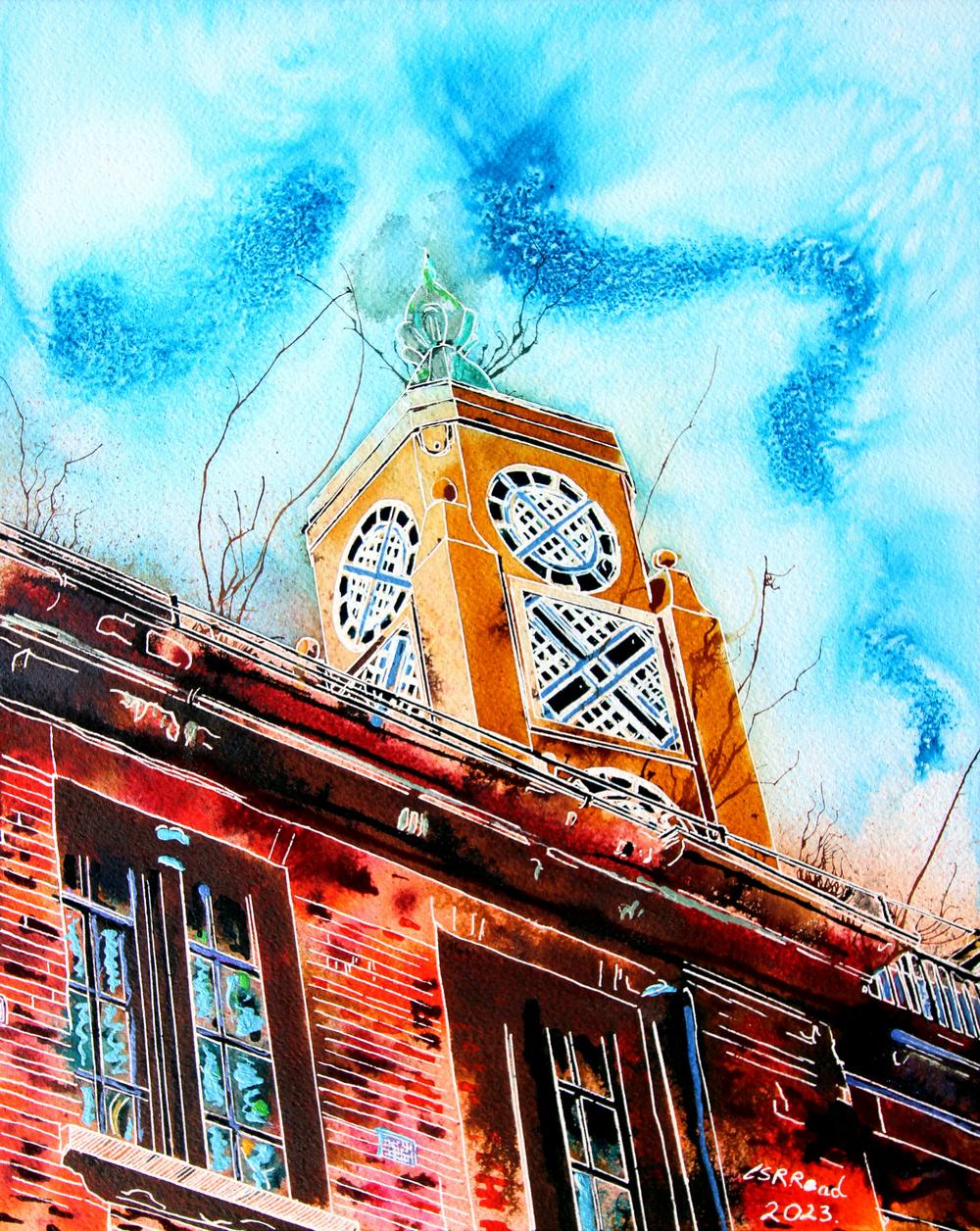
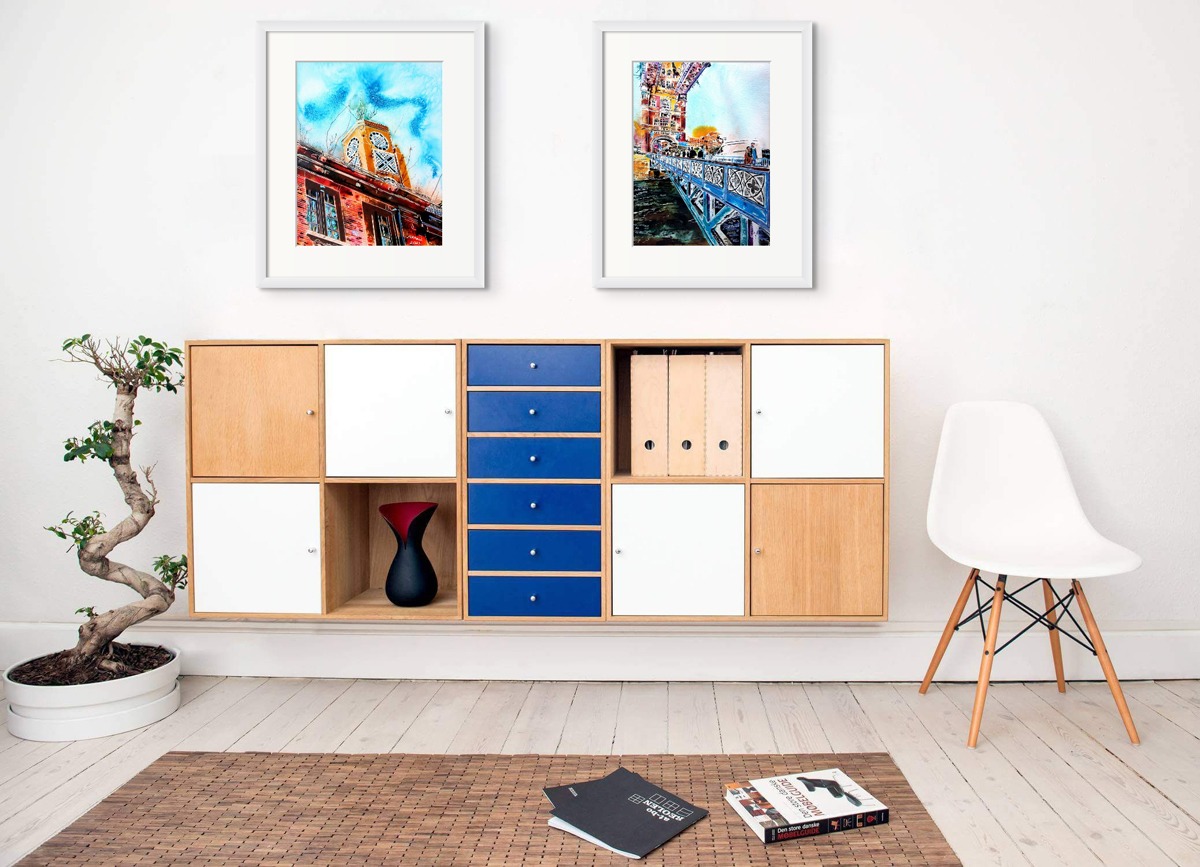
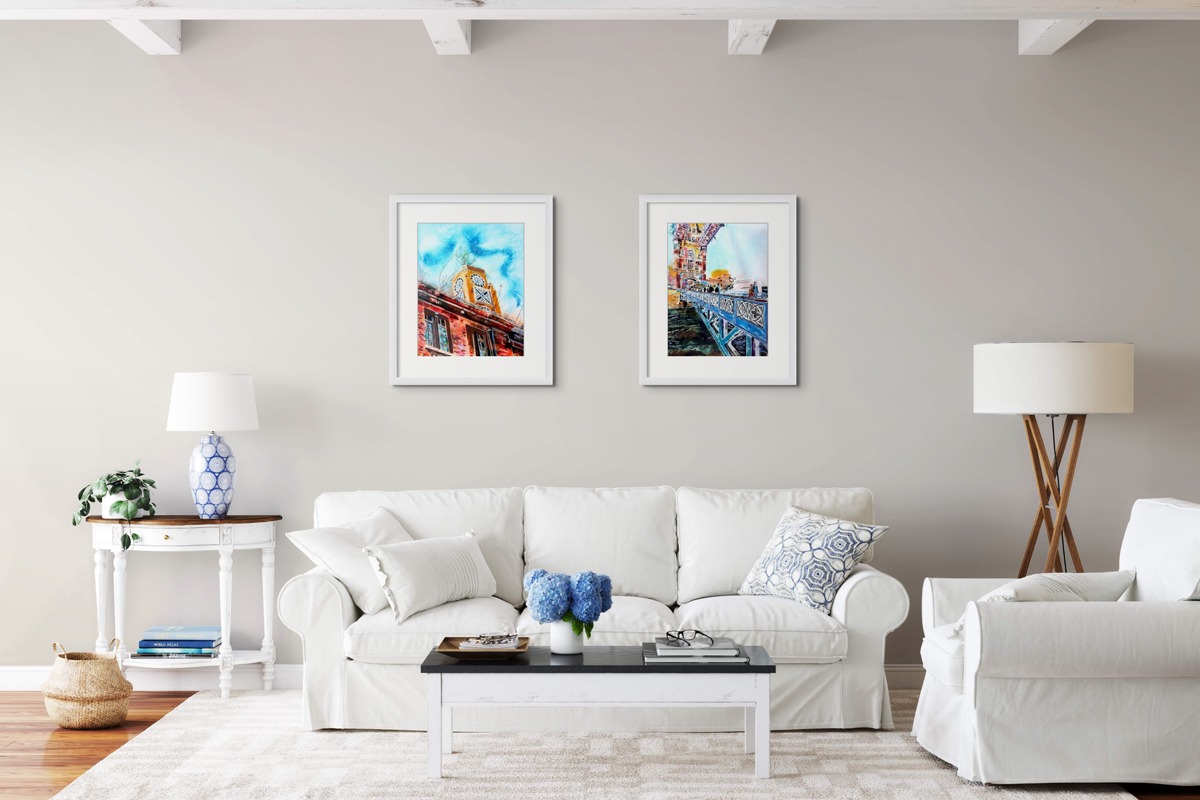

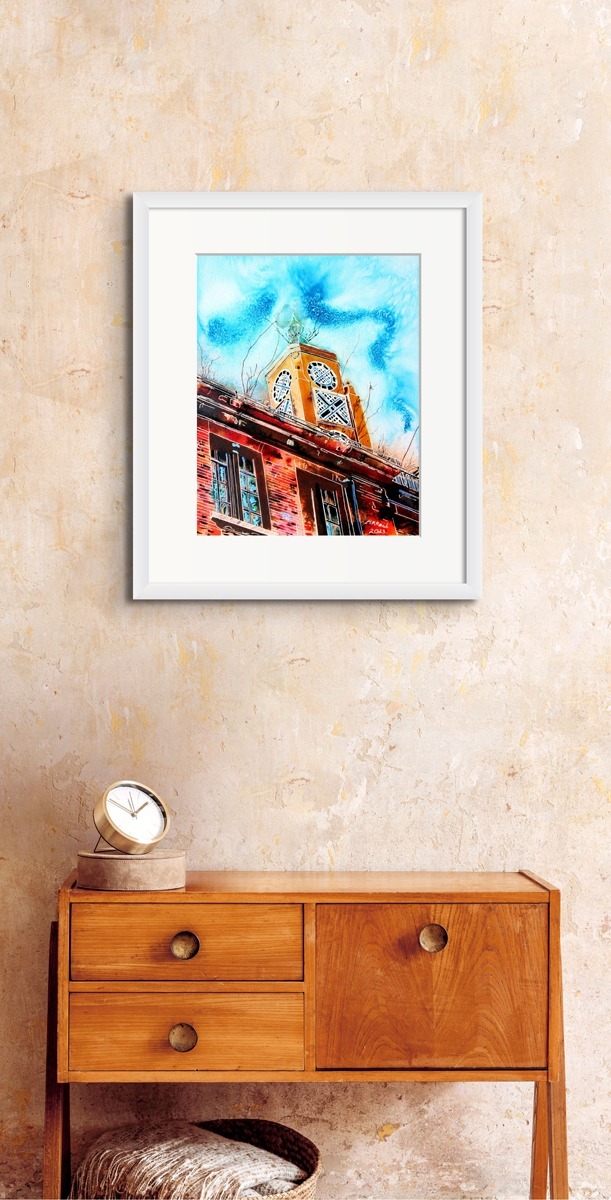
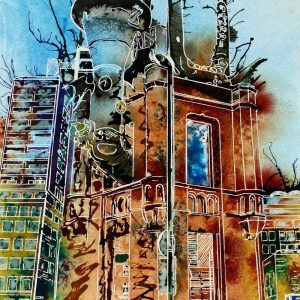
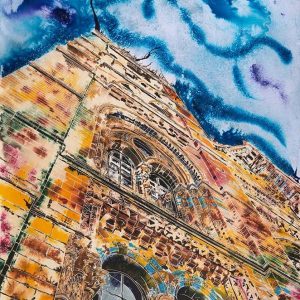
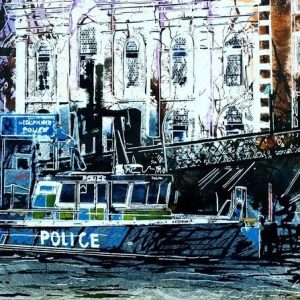
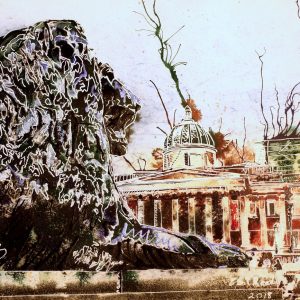
Reviews
There are no reviews yet.